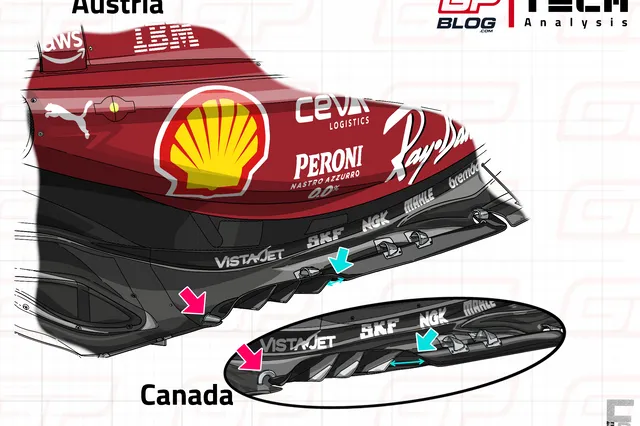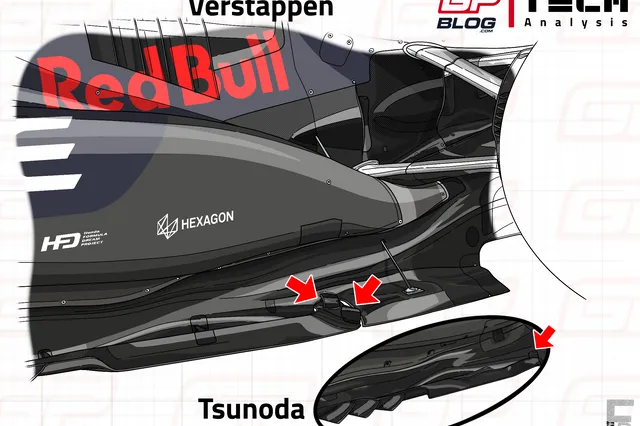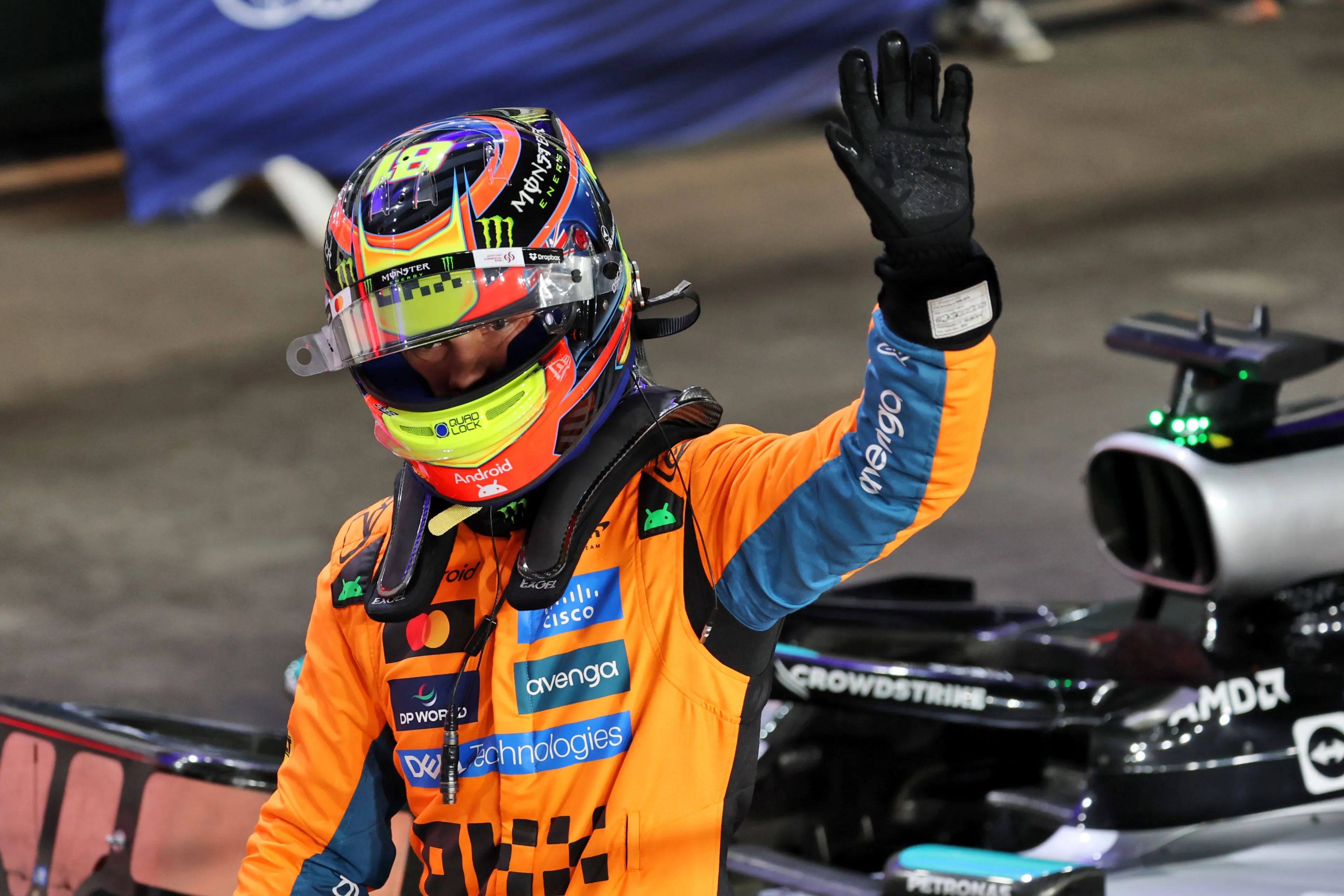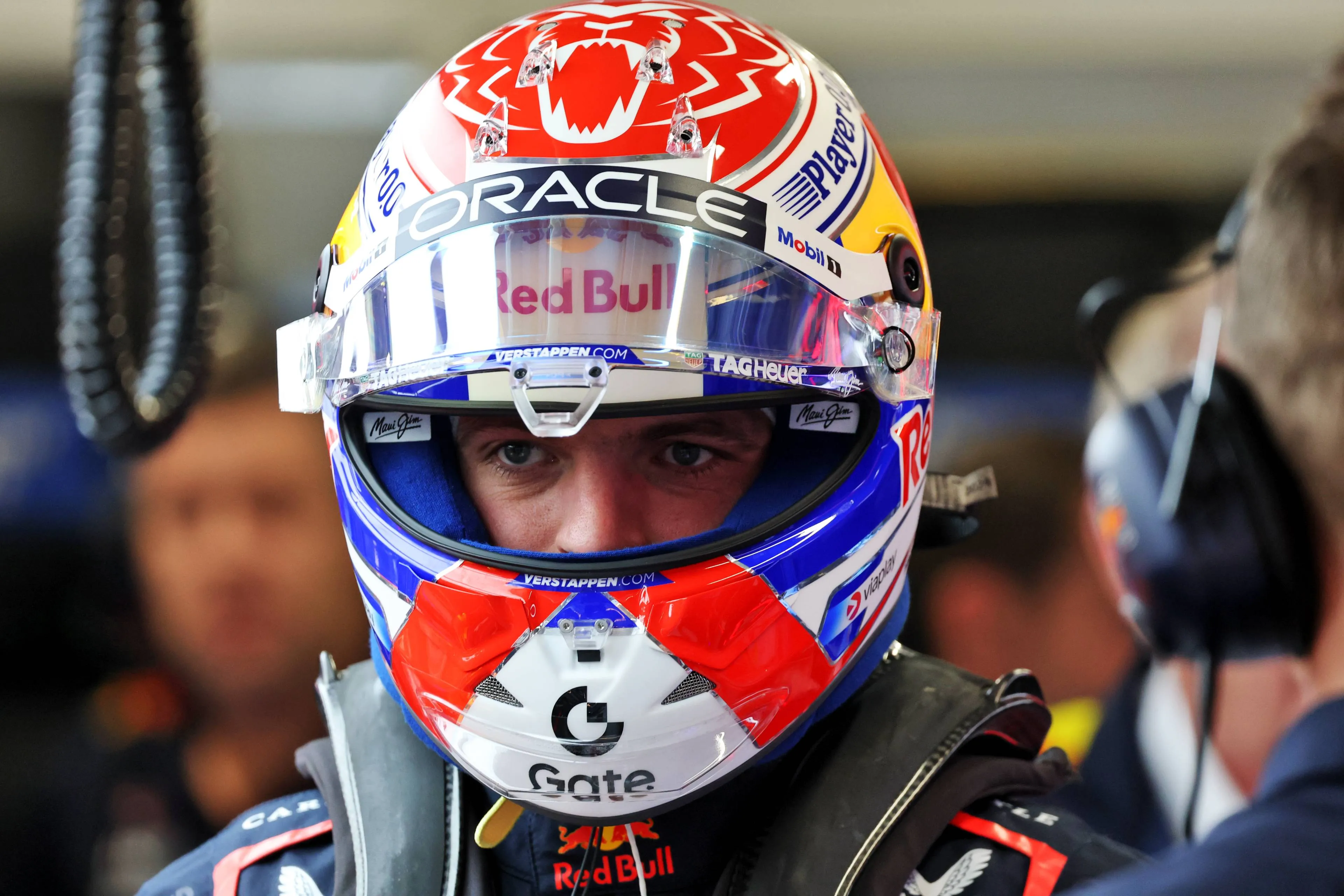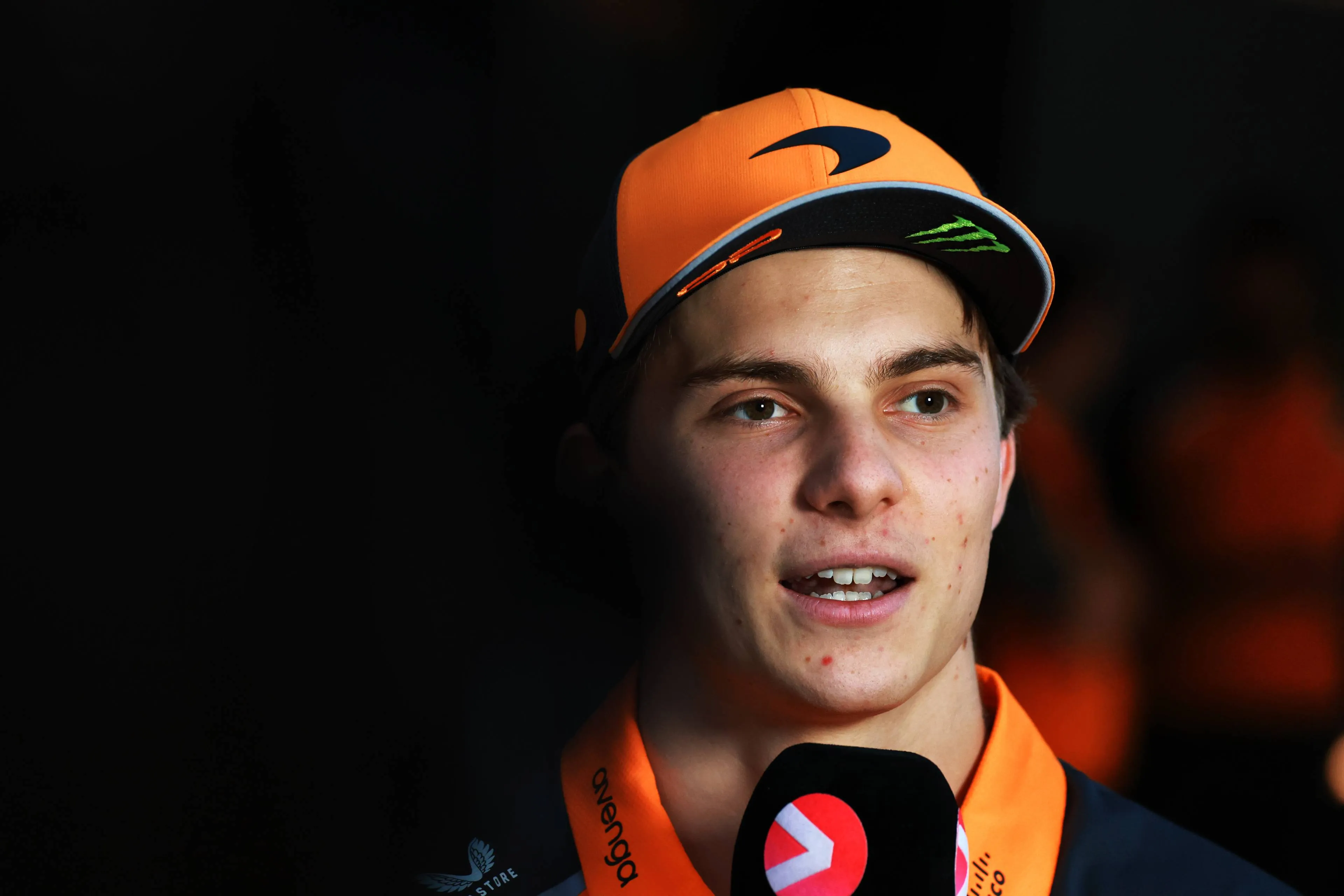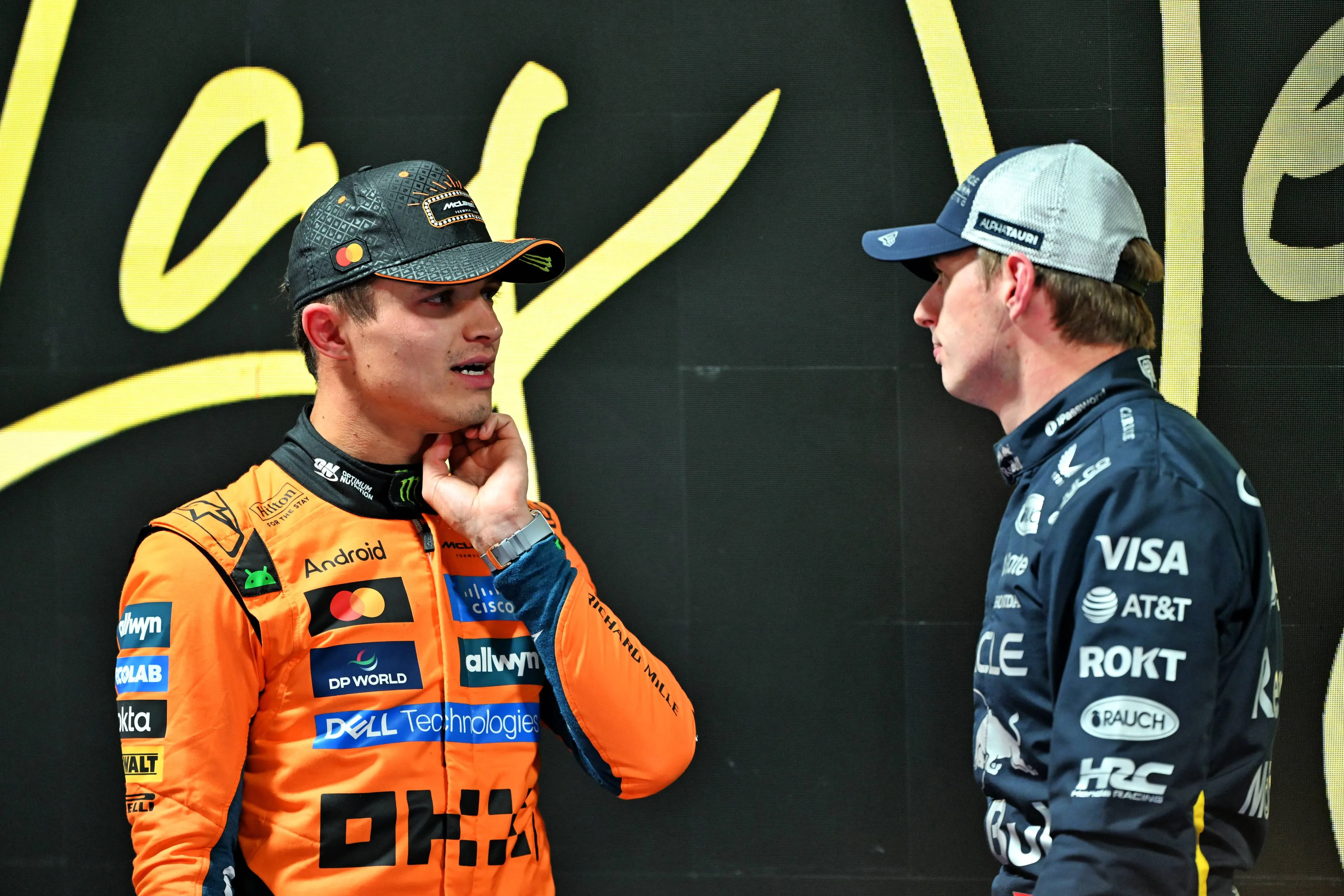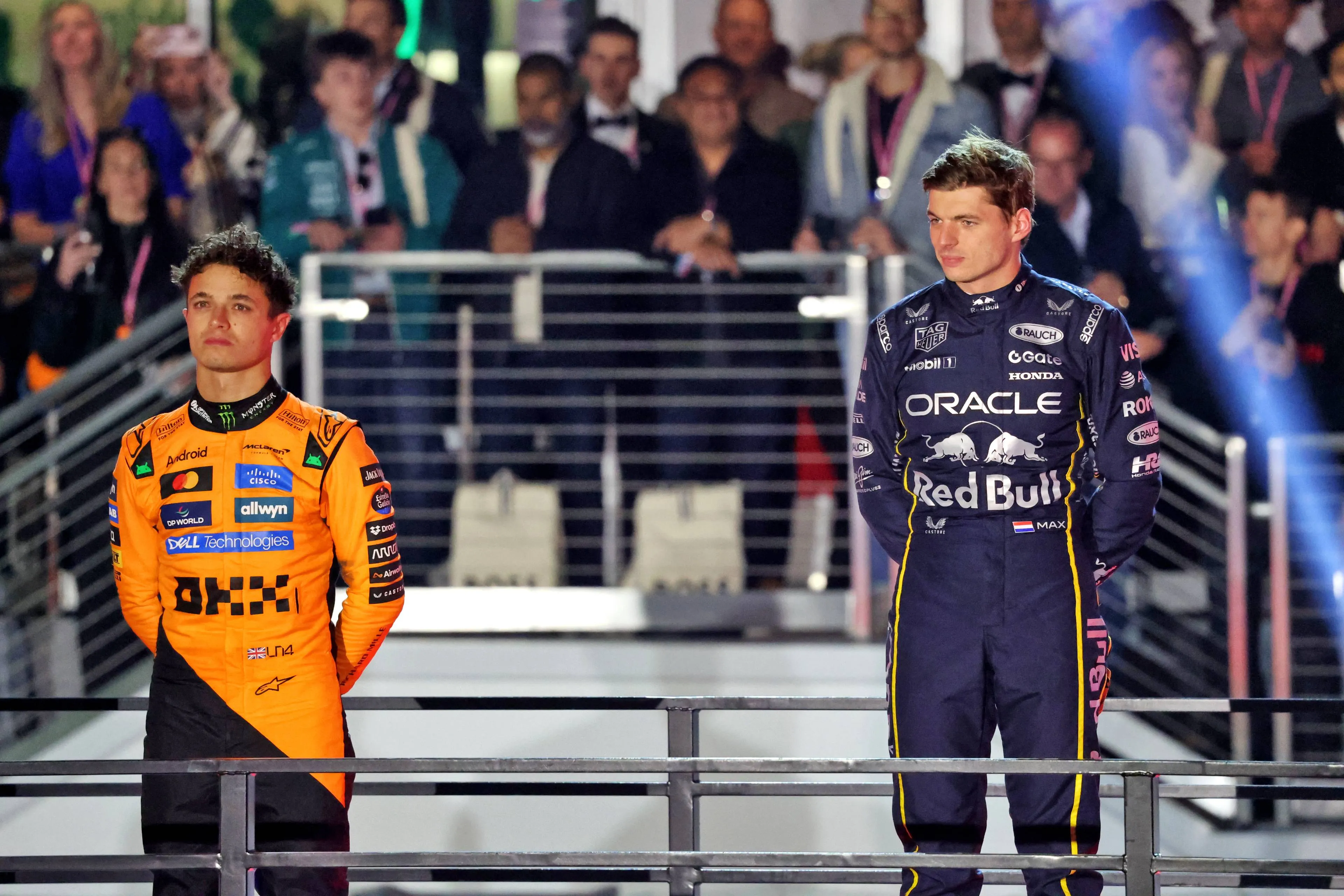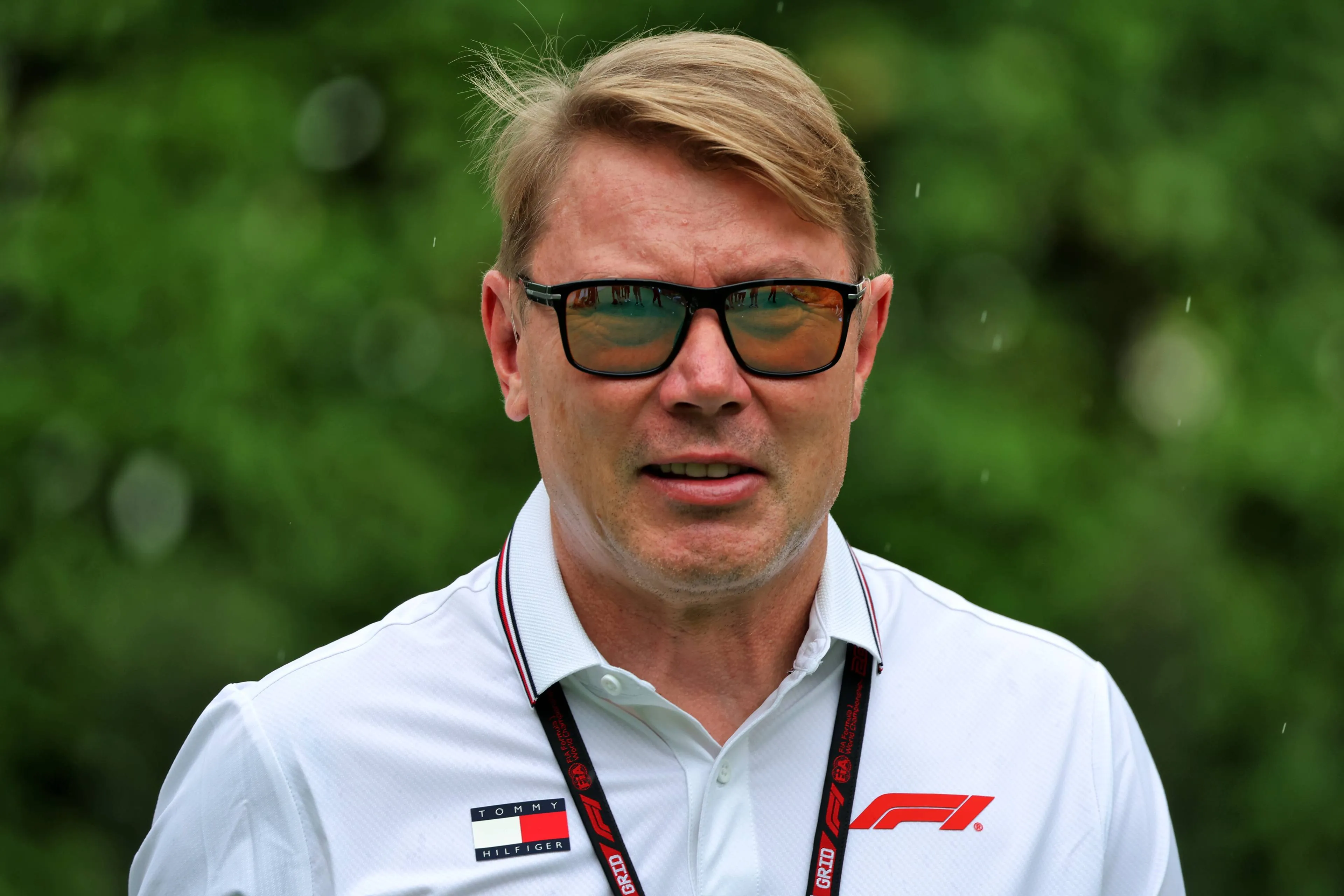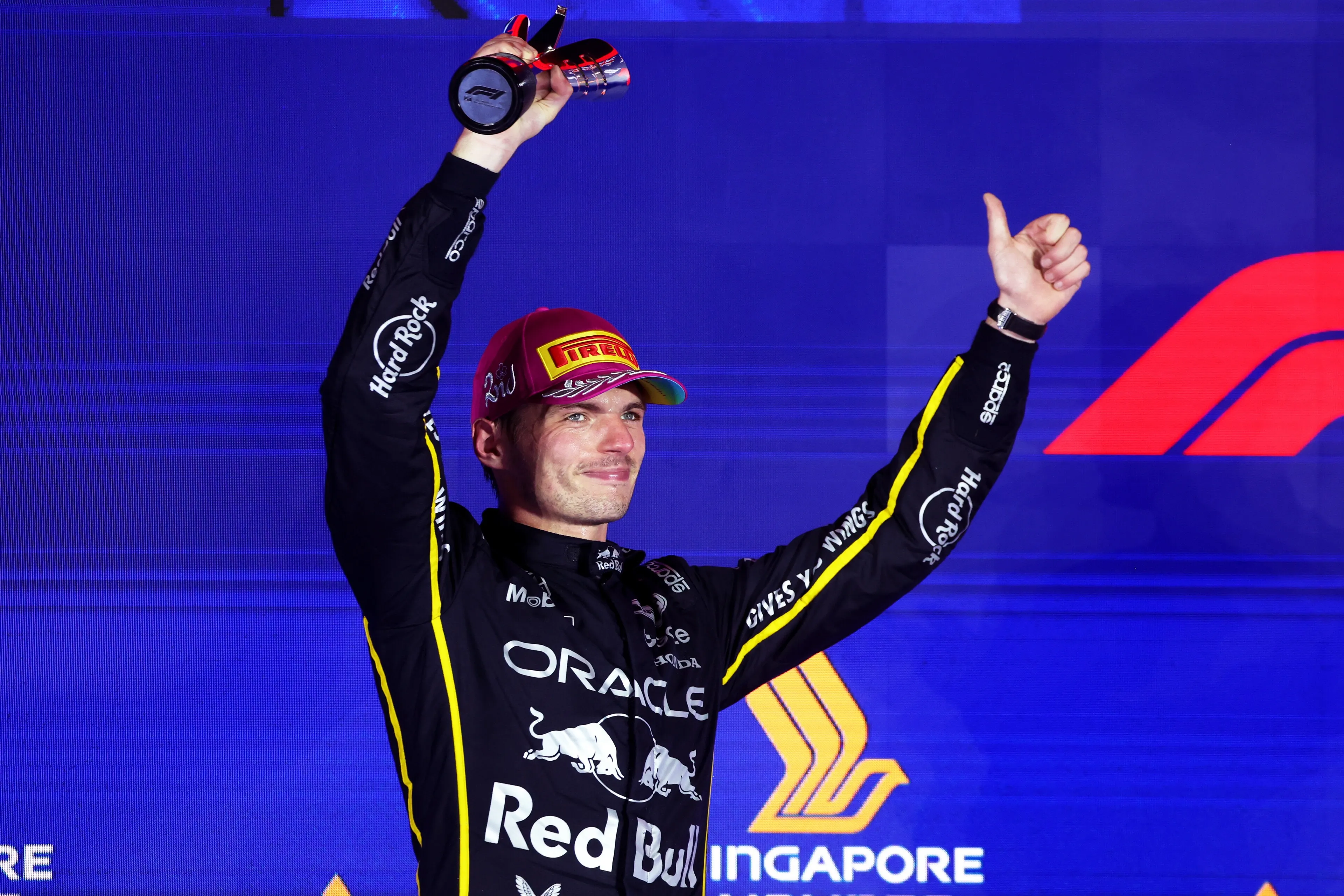F1 Tech | Why is McLaren quicker than competitors in every condition?
The Belgian Grand Prix weekend offered many variables, but one certainty: McLaren had the quickest car in every condition. Even during the Sprint, despite Verstappen’s overtake on Piastri during the first lap of the race, the Australian managed to stay within a second of the Dutchman for the whole race. The MCL39’s superiority also emerged in wet conditions on Sunday, proving to have quite an advantage over Ferrari and Red Bull behind. Let’s try to explain why.
McLaren arrived at Spa-Francorchamps with some updates, including a new floor that they had already tested during FP1 at Silverstone, and a revised rear wing to better suit the fast-flowing layout of the Belgian Circuit.
For what concerns the new floor, it showed off some big changes in the floor edge wing area: as highlighted in the drawing below, the front portion now shows 4 vortex generators which have all a similar shape and are much more sharp than the previous version, which instead featured 2 bigger vortex generators and three smaller ones placed just behind (red arrows).
Moreover, the light blue arrows also highlight that the new version features a longer portion of the knife with the upper lip raised compared to the previous version. This design is similar to the one already seen on the RB21’s last floor spec brought at Silverstone as well. Last but not least, minor but specific changes appeared to the supports: as shown by the yellow arrows, the metal supports of the long “knife” on the new version are 4 in total, while the previous floor featured only two.
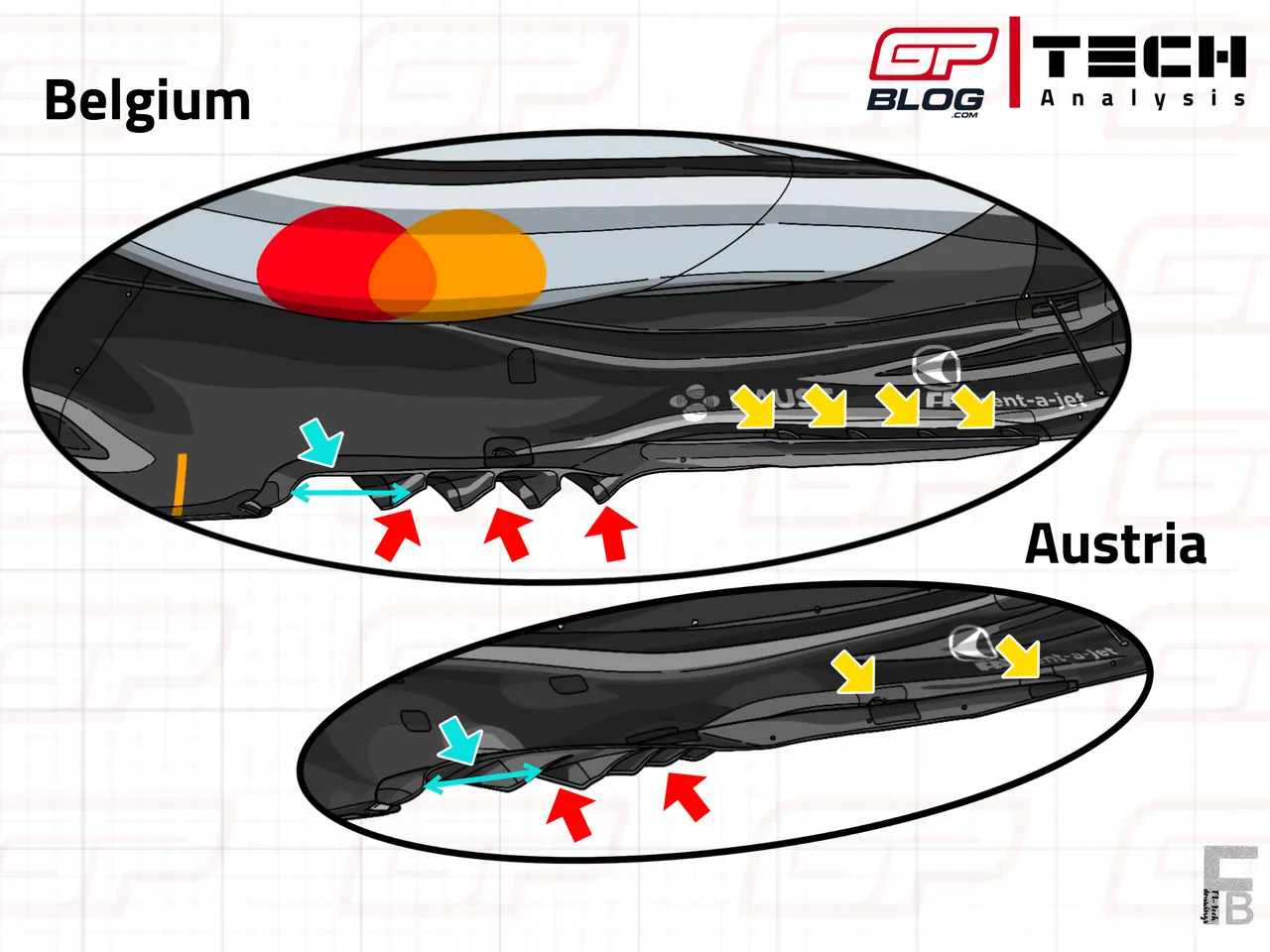
The goal of this new floor is to better extract the front tyre turbulence laterally, preventing it from being sucked into the central part of the underbody. This, in fact, could "dirty" the low-pressure airflow, drastically reducing the level of downforce generated by the Venturi channels. Furthermore, the changes to the rearmost portion of the floor edge, aim to better seal off the floor by producing more vortices, which also help push the airflow towards the "mouse hole" (positioned laterally on the diffuser ramp), thus increasing the flow of air directed towards the rear of the car.
All these changes are mainly aimed at increasing the level of downforce generated by the Venturi channels to further improve the MCL39’s performance in the medium and high speed corners, precisely where downforce is needed. However, this downforce must be generated at a low drag cost, thus making this load generated “efficient”, which has been McLaren’s mantra since the beginning of 2023.
This new floor was also previously tested during FP1 at Silverstone, primarily to gather data for engineers and to determine if it behaved as expected in their simulations. Brown himself confirmed that both cars would have used it during the Belgian Grand Prix: “We are actually pretty pleased with what we have seen in FP1. All the indications are leading us to introduce this new floor at upcoming events.”
Beyond these changes, the team also introduced a new rear wing, which slightly differed from the spec already used at Silverstone by the design of the DRS flap connection to the endplate, which was slightly trimmed, to reduce drag even more. As shown in the drawing below, the team also opted for a single element beam wing, which had a tapered drop shape, representing a sort of extension of the diffuser to the ceiling, helping the flow extraction and thus increasing the overall downforce generated.
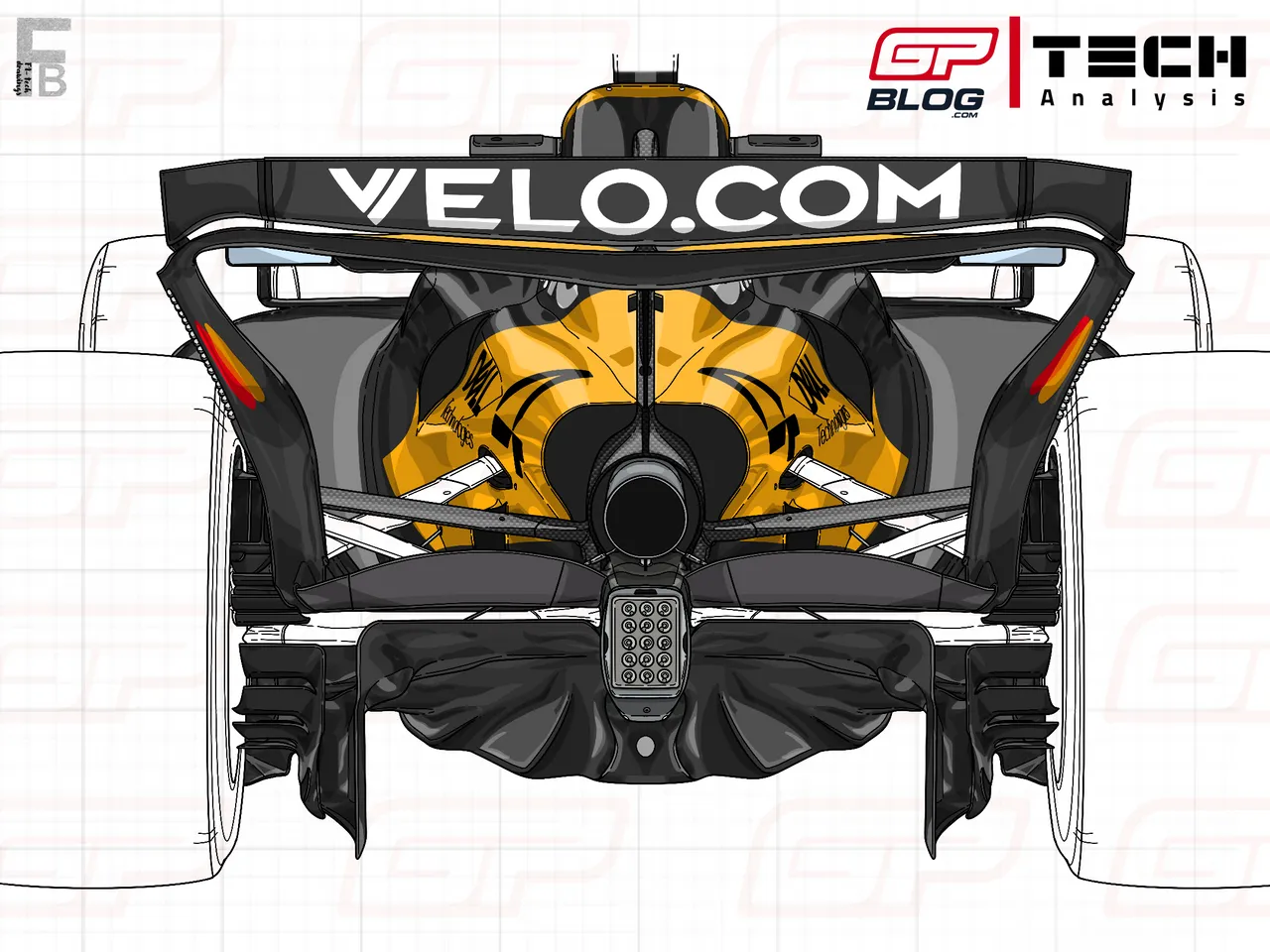
All these components were already fit on both cars since FP1 and had a very positive impact: the MCL39 looked unbeatable in the middle portion of the track, which is characterised by medium and high speed corners like turn 12-13, Puhon and the tricky turn 8-9. The 0.8 gap to Verstappen (and Ferrari) in that portion of the track during the first hour of running just demonstrated the great “efficient load” expressed by the MCL39, which was able to have a decent speed on long straights while still producing high levels of downforce, also thanks to the new floor.
This aspect was confirmed by Andrea Stella as well after Sunday’s race in the usual post race interviews: “I think Spa is much more dominated by a medium speed range which if you want is centered around 200 kph which is also the speed at which McLaren performs very well.”
This strength helped a lot during qualifying: both in the Sprint quali and in the main one, both Norris and Piastri were always the quickest in that portion of the circuit, opening a wide gap to their competitors which was then almost impossible to recover.
Not just upgrades, but a stellar aero-mechanical platform
Moreover, the car also showed off a very low ride height, helpful to extract the maximum load from the Venturi channels and indicative of the great mechanical set-up: through Eau Rouge every tyre (and consequently the suspension system) is subjected to a load of 1000 kg, which compresses the car vertically. As a consequence most teams decide to adopt a more conservative set-up in terms of ride height, raising the car to reduce the skid wear in that area, preventing any kind of disqualification.
In contrast, McLaren looked particularly strong from that point of view, being very close to the ground especially on the rear axle without facing skid wear problems. This aspect proves that the mechanical system of the MCL39 is able to cope with bumps and big vertical compressions (like Eau Rouge and Radillion) much better than other cars, staying quite soft while still guaranteeing a very stable aerodynamic platform.
All these aspects combined eventually determine the car’s superiority in all different kinds of corners and in different conditions: the aerodynamic and the mechanical side always work in synergy, guaranteeing a very stable aerodynamic platform but a soft enough suspension system that keeps the tyres in the right working window in completely different conditions, being the rain or Bahrain hot temperate.
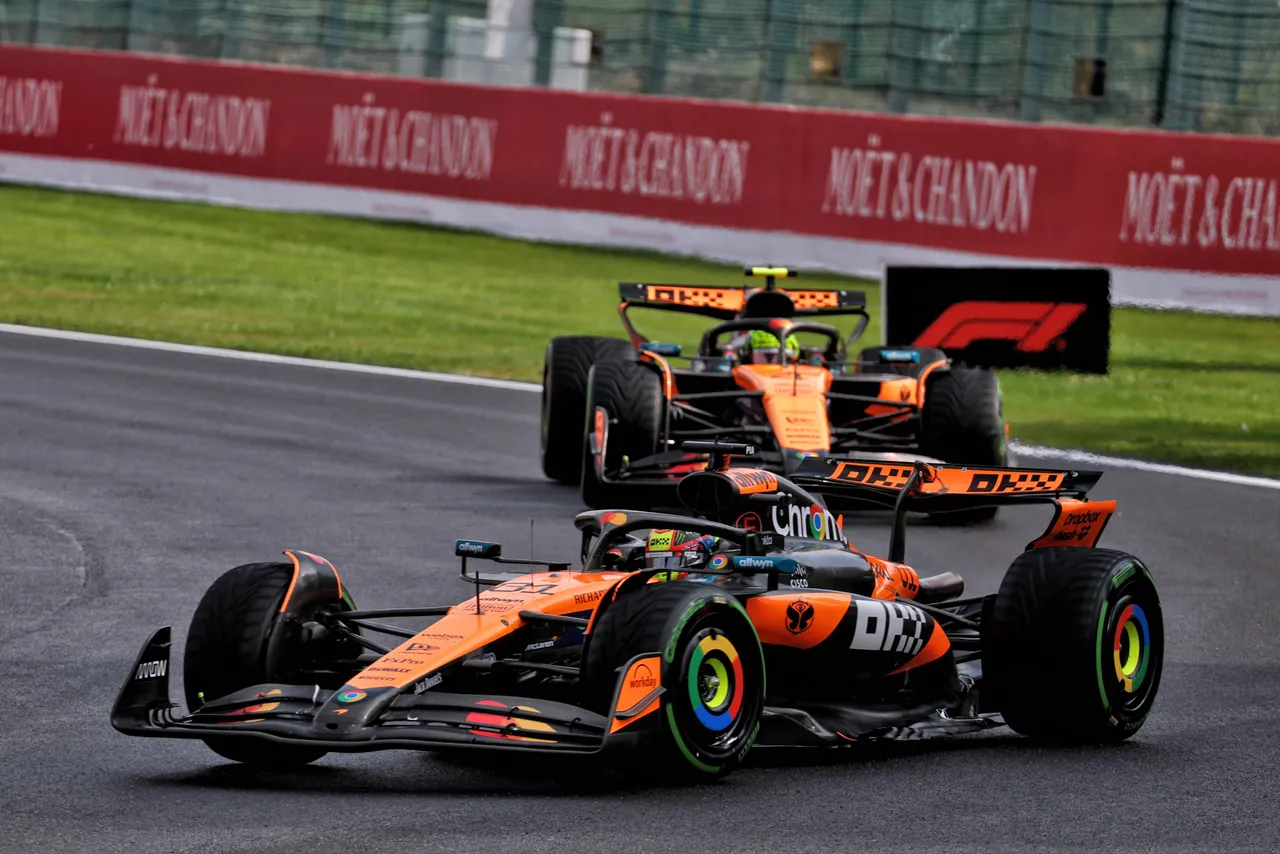
These aspects, together with the already mentioned great cooling system (both for the PU and for the brakes), allows the MCL39 to be basically unapproachable by every other car on the grid, independently of the conditions.
Not by accident, in fact, McLaren were able to score the third consecutive one-two during Sunday’s race: the wet conditions favored their ability to better manage the tyre’s temperature, especially as the intermediates started to drop off. Particularly significant was the fact that when Piastri switched to the slicks on lap 13 (and thus 8 full laps after the start behind Safety Car), he already had almost a 10-second gap to Leclerc in P3. This was made possible by McLaren’s superiority in the middle sector, with an astonishing 2 seconds advantage only in that portion in some laps.
The total domination continued also on the slicks, with an average of 0.156 seconds gained on every lap by Piastri on Leclerc though his 31 laps stint, even though all drivers (except for Norris who was on the hard) had to look after their medium tyres to get to the end of the race.
In conclusion, the Belgian Grand Prix was another clear demonstration of the reason behind McLaren’s 10 wins in the first 13 races of the season. Both the Drivers’ and the Constructors’ Championships are now in total control of the Woking team, forcing rivals to focus only on 2026 for a different outcome.
Read also
Popular on GPBlog
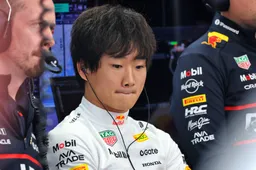
Yuki Tsunoda declines taking on new role at Red Bull Racing (for now?)
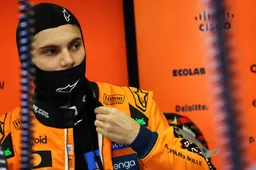
F1 LIVE | Reaction as Piastri on Sprint pole as Hamilton starts P18
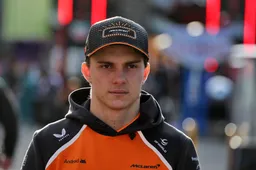
F1 LIVE | Reaction as Piastri tops FP1 in Qatar ahead of Norris



